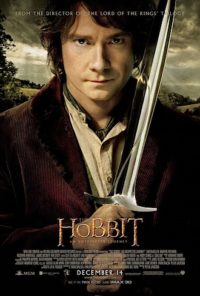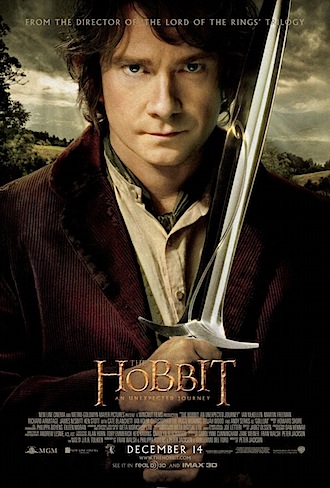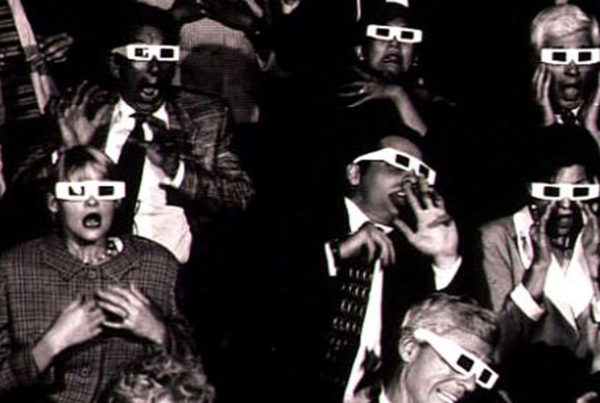 It may be playing in cinemas but I’m not entirely convinced that The Hobbit: An Unexpected Journey – and, by extension, the forthcoming Desolation of Smaug and There and Back Again – is actually cinema. At least not cinema the way that this particular old geezer remembers it. First, let us put aside the technological innovation for a few paragraphs and focus on the story. These films have been been created to deliver an experience to existing fans of the Lord of the Rings films and is arguably even more tailored to their needs than, say, the Twilight franchise is to their fans. It certainly makes as few concessions to the neutral.
It may be playing in cinemas but I’m not entirely convinced that The Hobbit: An Unexpected Journey – and, by extension, the forthcoming Desolation of Smaug and There and Back Again – is actually cinema. At least not cinema the way that this particular old geezer remembers it. First, let us put aside the technological innovation for a few paragraphs and focus on the story. These films have been been created to deliver an experience to existing fans of the Lord of the Rings films and is arguably even more tailored to their needs than, say, the Twilight franchise is to their fans. It certainly makes as few concessions to the neutral.
Fans from Bratislava to Beirut want to spend as much time as possible in Middle Earth and writer-director Peter Jackson delivers – to the extent that several familiar characters make inelegant cameo appearances and the audience gets to spend considerable time acclimatising. It really doesn’t matter that I think the whole thing faffs around for far too long and already feels hyper-extended. Criticising The Hobbit for length is falling in to the trap of reviewing the film you wish you were watching instead of the one in front of you.
The story starts with an awkwardly executed framing device. Old Bilbo (Ian Holm) is writing his memoirs – the same book he is seen writing at the beginning of The Fellowship of the Ring. Indeed, it is the day of that very party, the day he will disappear and the day that Frodo (Elijah Wood) will inherit The Ring that gives everyone so much grief. It’s entirely appropriate that the film start this way – as I mentioned before fans want this story to be tied in with the originals as much as possible – but the writing is immediately clunkier than you remember it. The humour falls a little flat. There’s no life in the scene. It plays like one of those TV sketches where slightly under-rehearsed guest stars turn up dressed as their most famous role.
A cross-fade later and Old Bilbo is now Young Bilbo. It is 60 years earlier and Martin Freeman now wears the hairy feet at Bag End. One visit from Gandalf (Ian McKellen) later and he is being inundated by dwarves – a motley bunch of singing, belching, scratching, coarse-acting little fellas who want – nay, need – him to join them on their quest to regain their ancestral homeland from the dragon – fire-breathing – who violently turfed them out years before. After an extremely ironic exchange in which Bilbo effectively becomes a contractor rather than an employee of the company – “I will not be responsible for his fate” says his supervisor Thorin Oakenshield (Richard Armitage) – Bilbo packs his bags for Erebor.
Frankly, it’s hard to imagine how Oakenshield and his dwarf companions are ever going to get to the Lonely Mountain, let alone win it back. They are forever being rescued in this film – twice by Gandalf, once by Bilbo and once by those giant eagles that would have saved everyone so much trouble if they’d arrived earlier in The Return of the King. On their way, they meet – and are unnecessarily scornful of – the elves Elrond (Hugo Weaving) and Galadriel (Cate Blanchett) as well as Christopher Lee as Saruman doing his best to signal his eventual intention to turn bad.
But it’s one special guest star that we all want to see again, isn’t it, and he doesn’t disappoint. The long scene between the always excellent Freeman and Andy Serkis’s Gollum is something marvellous – worth the price of admission if you are looking for an excuse. This is also the scene where the much-heralded new HFR (or 48fps) technology starts to pay off but it sure takes a while getting there.
There’s been a lot of talk about this newfangled photography and it does appear to be splitting opinions – often between reviewers like me who seem to hate it and civilians who love it. Firstly, it isn’t what you are used to. It is very shiny. There isn’t much in the way of texture to the image – there’s no such thing as film grain for example – and it seems like it is too brightly lit in many scenes. But it is brilliantly clear, the 3D is easier on the eye than ever before and some shots really do ‘pop’ in ways that film (or 24fps) never would.
At present the only mass audience for moving pictures above cinema’s 24 are video gamers (where some games refresh at over 100fps) and it’s that look that The Hobbit reminds me of. Of course, it heps that so much of the environment is computer generated but it is a video game aesthetic that we are being sold here not a cinematic one – so much so it wouldn’t have surprised me if two of the dwarves had actually turned out to be Italian plumbers.
 Briefly, Pierce Brosnan almost-but-not-quite shakes off the smooth Bond reputation in Love Is All You Need, a seaside romance directed by Susanne Bier (After the Wedding, In a Better World). The mix is odd at first – as if Love Actually’s Richard Curtis had decided to try Dogme – but Bier’s skill with character gets us under the skin of these people so they can rise above the rom-com caricatures. The script telegraphs things a bit, but Trine Dyrholm as hairdresser Ida – unexpectedly catching the eye of fruit and veg tycoon Brosnan at their children’s wedding – shines throughout.
Briefly, Pierce Brosnan almost-but-not-quite shakes off the smooth Bond reputation in Love Is All You Need, a seaside romance directed by Susanne Bier (After the Wedding, In a Better World). The mix is odd at first – as if Love Actually’s Richard Curtis had decided to try Dogme – but Bier’s skill with character gets us under the skin of these people so they can rise above the rom-com caricatures. The script telegraphs things a bit, but Trine Dyrholm as hairdresser Ida – unexpectedly catching the eye of fruit and veg tycoon Brosnan at their children’s wedding – shines throughout.
Printed in Wellington’s Capital Times on Wednesday 19 December, 2012.



As I understand it the studio – Warner Bros? – insisted on cutting 20 minutes. ‘More! Cut more!’ I hear you cry. But what was cut was the detail that differentiated the dwarves – sketched in their backstories and individualised their characteristics. I’d rather have had all that and lost 30mins of the gratuitous, repetitive and ridiculously cartoonish fight scenes that take us right out of the story and reduce our engagement to nothing more than admiring the technological illusions. The extremity of medium becomes the lesser message.
Consider which Dwarves get single credits as supporting leads and how invisible they are as distinctive characters. That was never the intention. Or is it a strategy to get even older farts like me to buy the DVD?
I think the tale you tell, John, is another ploy to get fans to go back multiple times – like the different technical formats.